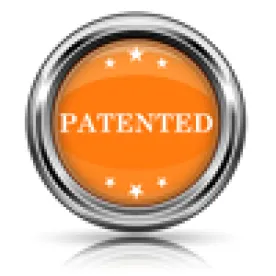Takeaway: To find anticipation, a prior art reference must disclose all elements of the claim within the four corners of the reference, and must also disclose those elements arranged as in the claim.
In its Decision, the Board denied the Petition as to all challenged claims of the ’124 patent. Accordingly, the inter partes review that Petitioner had requested was not instituted.
Petitioner had sought inter partes review of claims 1, 2, 4, 6, 17, 18, 20, and 22 of the ’124 patent, which relates to “[a]n extrusion head for depositing layers of solidifying material in a desired pattern to form three-dimensional physical objects[.]” The grounds asserted by Petitioner included: anticipation of claims 1, 2, 4, 6, 17, 18, 20, and 22 under 35 U.S.C. § 102 in view of Crump; obviousness of claims 1, 2, 4, 6, 17, 18, 20, and 22 under 35 U.S.C. § 103(a) in view of Crump and Evans; obviousness of claims 1, 2, 4, 6, 17, 18, 20, and 22 under 35 U.S.C. § 103(a) in view of Crump and Pearson; obviousness of claims 1, 2, 4, 6, 17, 18, 20, and 22 under 35 U.S.C. § 103(a) in view of Crump and Baker; and obviousness of claims 1, 2, 4, 6, 17, 18, 20, and 22 under 35 U.S.C. § 103(a) in view of Crump and Floyd.
The Board construed the claims under the broadest reasonable interpretation standard (BRI). In doing so, the Board disagreed with Petitioner’s proposed construction that the claim term “thin-wall” should mean “on the order of .005-0.015 inches.” According to the Board, “there is no requirement that [the Board’s] construction necessarily contain precise numerical measurements merely because they appear in the examples” described in the specification.
Petitioner had supported its anticipation challenges to claims 1, 2, 4, 6, 17, 18, 20, and 22 of the ’124 patent with a Declaration by Dr. Thomas A. Campbell. The Board found that such challenges impermissibly mixed together teachings from different embodiments of Crump in a manner that precluded any finding of anticipation. As stated by the Board, “[t]o anticipate, the prior art reference must disclose all elements of the claim within the four corners of the reference, and must also disclose those elements arranged as in the claim.” The Board also noted that Petitioner’s arguments did not show sufficiently that the thin-wall tube recited in claims 1 and 17 was disclosed by Crump because, for example, Petitioner’s calculations with respect to the thin-wall tube element were flawed and because arguments based on dimensions shown in drawings that are not described as being to scale are typically not persuasive. Also, Crump was considered by the Examiner during prosecution of the application that resulted in the ’124 patent.
As for the obviousness-based challenges, the Board was not persuaded that Petitioner had provided sufficient explanation as to how or why one skilled in the art would have combined the various references in the asserted manner. The Board found this to be so despite the fact that Petitioner had attempted to rely on the Declaration of Dr. Thomas in support of its contentions.
Microboards Technology, LLC d/b/a Afinia v. Stratasys Inc., IPR2015-00287
Paper 13: Decision Denying Institution of Inter Partes Review
Dated: May 28, 2015
Patent: 6,004,124
Before: Donna M. Praiss, Kristina M. Kalan, and Jon B. Tornquist
Written by: Kalan
Related Proceedings: Stratasys Inc. v. Microboards Tech., LLC d/b/a Afinia, Civil Action No. 13-cv-03228-DFW-TNL (D. Minn.)



 />i
/>i
